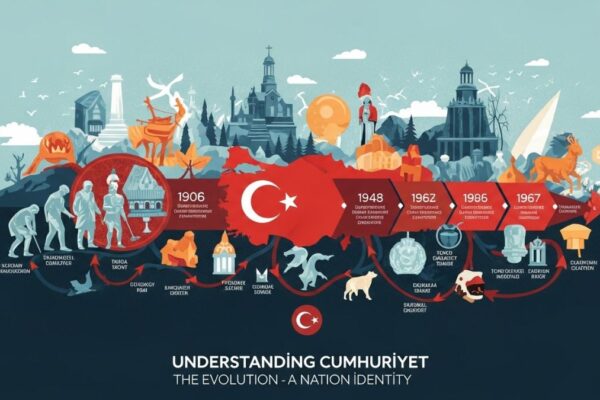The Power of hr connectivity: Building a Cohesive Workplace Culture

In today’s fast-paced work environment, creating a cohesive workplace culture is more crucial than ever. Employees crave connection, purpose, and belonging. Yet many organizations struggle to foster this sense of unity. Enter HR connectivity—the bridge that links employees with the values and goals of their organization.
Imagine a workplace where communication flows seamlessly, collaboration thrives, and every individual feels valued. This kind of atmosphere doesn’t happen by accident; it requires deliberate effort from Human Resources professionals who understand the vital role they play in shaping culture.
As we explore the power of HR connectivity and its impact on building a strong workplace culture, discover how your organization can benefit from these connections—leading to increased employee engagement and overall success. Let’s dive in!
Understanding Workplace Culture and its Impact on Companies
Workplace culture is the invisible force that shapes employee behavior, attitudes, and interactions. It comprises shared values, beliefs, and practices within an organization. When aligned with company objectives, it enhances motivation and productivity.
A strong workplace culture often leads to higher employee retention rates. When individuals feel connected to their company’s mission, they are more likely to stay long-term. This stability fosters a sense of trust and collaboration among team members.
Conversely, a toxic culture can drive talent away. High turnover not only disrupts operations but also incurs significant costs in hiring and training new employees.
Moreover, workplace culture influences customer perception. Companies known for positive environments often attract clients who value ethical business practices. The health of workplace culture directly affects overall performance and growth potential for any organization.
The Role of HR in Building a Cohesive Workplace Culture
Human Resources play a pivotal role in shaping workplace culture. They are the architects of an environment where employees feel valued and connected.
HR professionals set the tone for communication practices, ensuring transparency and fostering trust among team members. This openness encourages collaboration, allowing diverse ideas to flourish.
Training and development initiatives crafted by HR help employees grow personally and professionally. By investing in individuals, organizations cultivate loyalty and enhance job satisfaction.
Moreover, HR is instrumental in promoting diversity and inclusion. A varied workforce brings unique perspectives that enrich company culture.
Regular feedback mechanisms created by HR ensure that employees’ voices are heard. When workers feel their opinions matter, engagement rises significantly.
HR acts as a bridge within the organization, linking leadership with staff to create harmony throughout the workplace.
Utilizing Technology for HR Connectivity
Technology plays a pivotal role in enhancing HR connectivity. With the right tools, HR professionals can streamline communication across departments and engage employees more effectively.
Cloud-based platforms allow instant access to important information. Employees can view policies, benefits, and updates from anywhere at any time. This transparency fosters trust between staff and management.
Collaboration software encourages teamwork across various teams. Tools like Slack or Microsoft Teams create spaces for casual conversations that strengthen relationships among colleagues.
Moreover, data analytics enable HR to monitor engagement levels and identify areas needing improvement. By interpreting this data, organizations can tailor initiatives that resonate with their workforce.
Mobile apps further enhance connectivity by offering resources on-the-go. Employees appreciate having training modules or feedback channels readily available on their devices.
Each of these technologies cultivates an environment where everyone feels connected and valued.
Case Studies of Successful Companies with Strong Workplace Cultures
One notable example is Google, which fosters a culture of openness and innovation. Employees are encouraged to share ideas freely, leading to creative solutions and collaborations that drive the company’s success.
Another case is Zappos. Their emphasis on customer service translates into a vibrant workplace where employees feel valued. The company’s unique hiring process focuses not only on skills but also on cultural fit, ensuring everyone shares the same values.
Salesforce stands out for its commitment to equality and community involvement. They actively promote diversity within their workforce, creating an inclusive environment where every employee can thrive.
These companies exemplify how strong workplace cultures contribute directly to higher employee satisfaction and improved performance. By prioritizing connectivity among HR practices and everyday operations, they create environments that foster loyalty and engagement across teams.
Strategies for HR Connectivity and Employee Engagement
Effective communication is key to HR connectivity. Regular check-ins and open forums encourage employees to voice their ideas and concerns. This creates a sense of belonging.
Team-building activities can also enhance relationships among staff members. These events foster collaboration and break down departmental silos, making everyone feel part of the same team.
Leverage technology for seamless engagement. Tools like instant messaging platforms or project management software facilitate real-time updates and feedback, keeping everyone connected, regardless of location.
Recognition programs play an essential role too. Celebrating individual achievements boosts morale while reinforcing company values.
Encouraging continuous learning shows employees that growth matters. Offering workshops or online courses not only develops skills but also enhances employee satisfaction and loyalty.
Creating spaces—both physical and virtual—where employees can collaborate freely nurtures creativity and strengthens ties within the organization. Every effort counts in building a cohesive workplace culture.
Measuring the Success of a Cohesive Workplace Culture
Measuring the success of a cohesive workplace culture can be both an art and a science. It goes beyond simple metrics; it involves understanding employee sentiments.
Surveys are a common tool for gauging engagement levels. Regularly asking employees about their experiences helps HR identify areas needing attention. Anonymous feedback can reveal hidden concerns that might otherwise go unspoken.
Another vital metric is turnover rates. High retention often indicates satisfaction with company culture, while frequent departures may signal underlying issues.
Performance indicators also play a role in this assessment. A motivated team typically shows higher productivity and innovation levels.
Observing interpersonal relationships within teams provides qualitative insights into cohesion. Strong communication channels foster collaboration and trust among employees, essential ingredients for any thriving workplace culture.
Conclusion:
Creating a cohesive workplace culture is essential for the success of any organization. The role of HR connectivity in this process cannot be overstated. By fostering strong connections among employees, leveraging technology effectively, and implementing best practices, companies can enhance employee engagement and satisfaction.
Real-world examples demonstrate that organizations prioritizing their workplace culture often see improved productivity and lower turnover rates. These companies understand that a positive environment leads to happier employees who are more committed to their work.
To measure the effectiveness of these initiatives, businesses should focus on key performance indicators related to employee engagement and morale. Regular feedback mechanisms can help refine strategies over time.



Leave a Reply